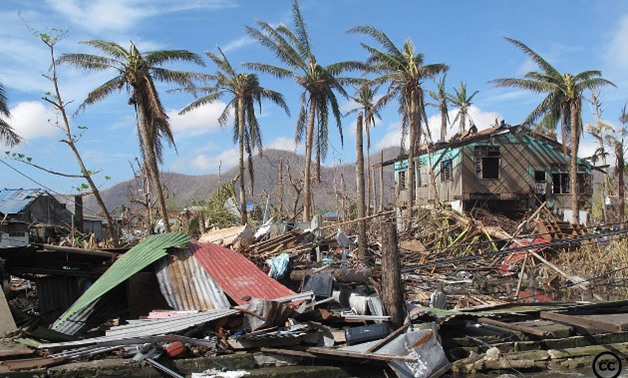
Disasters make 14 million people homeless each year - UN - File Photo
LONDON - 13 October 2017: About 14 million people are being made homeless on average each year as a result of sudden disasters such as floods and storms, new figures show.
The risk of displacement could rise as populations swell and the impacts of climate change become more severe, said a report issued on Friday by the United Nations Office for Disaster Risk Reduction (UNISDR) and the Geneva-based Internal Displacement Monitoring Centre (IDMC).
Earthquakes, tsunamis, floods and tropical cyclones are the main disasters forecast to uproot large numbers of people, with countries in Asia, home to 60 percent of the world's population, hit particularly hard, according to modelling by the agencies.
Eight of the ten countries with the highest levels of displacement and housing loss are in South and Southeast Asia.
They include India, where an average of 2.3 million people are forced to leave their homes annually, and China with 1.3 million people uprooted each year, found the report, released on the International Day for Disaster Reduction.
The numbers exclude those evacuated ahead of a threat, and people displaced by drought or rising seas.
Russia and the United States also feature as countries where disasters could cause large-scale homelessness, unless significant progress is made on managing disaster risk, the study said.
"The findings underline the challenge we have to reduce the numbers of people affected by disasters," said Robert Glasser, the U.N. secretary-general's special representative for disaster risk reduction.
"Apart from death or severe injury in a disaster event, there is no more crushing blow than the loss of the family home," he added in a statement.
The most devastating floods to hit South Asia in a decade killed more than 1,400 people this year, and focused attention on poor planning for disasters, as authorities struggled to assist millions of destitute survivors.
Refugees and people uprooted in their own countries are already at record-high numbers, said IDMC director Alexandra Bilak. The new model goes some way towards predicting the risk of disaster-related displacement, which is an "urgent, global priority", she noted.
It is also intended to help urban planners in hazard-prone towns and cities who must consider the safety and durability of built-up areas and the threats to millions living there. Justin Ginnetti, head of data and analysis at the IDMC, told the Thomson Reuters Foundation there was a strong correlation between the risk of being uprooted by a disaster and residing in a rapidly urbanising location.
With the poor often living on the outskirts of cities, on flood plains or along river banks, Ginnetti said better urban planning could make them less vulnerable.
He contrasted Japan and the Philippines, which have roughly the same number of people exposed to cyclones. Japan builds more robust housing and so faces far less displacement in a disaster than the Philippines, where homes are less able to withstand shocks, he said.
"We don't want people to think of disaster displacement as some kind of inevitable act of God - this is not (a) necessary outcome every time there's heavy rainfall," he said.

Comments
Leave a Comment